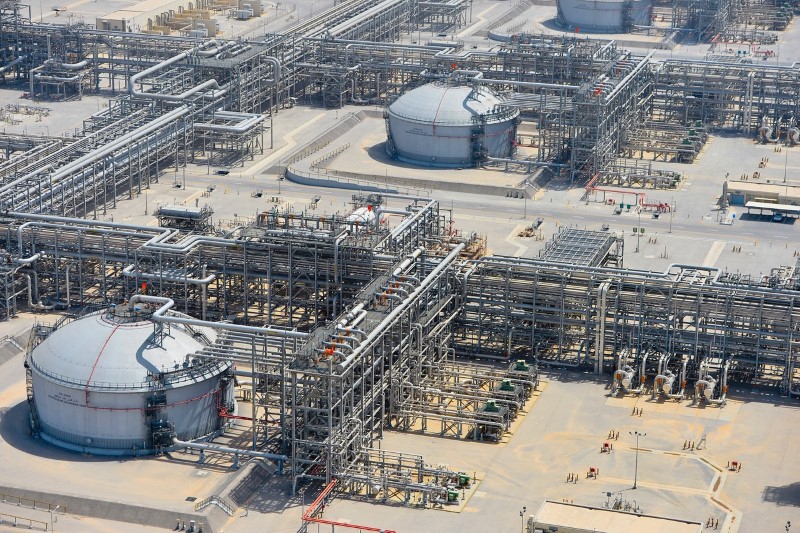(Bloomberg) -- Saudi Arabia’s central bank depleted its net foreign assets in March at the fastest clip since at least 2000, showing the severity of the damage inflicted by the slump in oil prices even as the government is only starting to lean on the holdings to cover budget needs.
The drop of more than 100 billion riyals ($27 billion), or over 5% from the previous month, brought the stockpile to $464 billion, the lowest since 2011, according to data compiled by Bloomberg. In the first quarter, the government ran a budget deficit of 34.1 billion riyals, which was mostly covered by external and domestic borrowing, Finance Ministry data showed on Wednesday.
Economists say the world’s biggest oil exporter will have have to dig deeper into reserves despite scaling back spending and looking to rely more on debt to withstand the historic collapse in commodity markets. Crude sales account for the majority of the government’s revenue.
Already under lockdown to contain the spread of the coronavirus pandemic, the kingdom is bracing for a second impact from the oil rout and unprecedented production cuts negotiated by OPEC and its allies, after a damaging price war between Russia and Saudi Arabia.
Only about a third of the total decline in net foreign assets reflects the government’s use of its current account and another third represents dollar liquidity likely injected into the banking system, according to data released late Tuesday by the Saudi Arabian Monetary Authority, or SAMA, as the central bank is known. The remainder probably went to offset capital flight, said Ziad Daoud of Bloomberg Economics.
Last week, Saudi Finance Minister Mohammed Al-Jadaan said the kingdom would only draw down reserves by up to 120 billion riyals over the whole year. The government used none of its reserves to cover the fiscal shortfall in the first quarter and tapped its current account with the central bank for 9 billion riyals, according to the Finance Ministry.
The price of Brent crude crashed by more than 50% in March and has fallen further since then, trading around $20 a barrel -- far short of the $76.1 the International Monetary Fund estimates Saudi Arabia needs to balance its budget.
- Saudi Arabia spent 226.2 billion riyals in the first quarter while taking in 192.1 billion riyals in revenue, according to a presentation on the Finance Ministry’s website
- Oil revenue dropped 24% from year earlier to 128.8 billion riyals; non-oil revenue fell 17%
- The government’s current account with the central bank shrank by over 45% from February to March to just under 40 billion riyals
- SAMA bills and repurchase agreements fell by more than a third to 62 billion riyals, a reflection of liquidity provided to banks
“It’s a very critical situation for Saudi Arabia,” said Monica Malik, chief economist at Abu Dhabi Commercial Bank. “We expect to see further drawdown of the FX reserves and pressure will increase in the second quarter with lower oil prices and production. And we believe the government will look to focus on raising debt to limit the drawdown, though there will be more.”
The finance minister has said the government wouldn’t lean more than anticipated on its reserves, with the kingdom planning to boost borrowing to 220 billion riyals this year as it absorbs the shock to its budget.
Saudi Arabia has already tapped international bond markets twice this year and has borrowed a total of $19 billion from local and international investors, according to data compiled by Bloomberg.
“The sharp decline in oil prices in March would have resulted in the government using its deposits to meet payment obligations,” economists at Emirates NBD, Dubai’s biggest bank, said in a report.
